For the 21st anniversary of RxToolKit, Founder Chuck DiTrapano shares the company’s journey from a dream to a reality. In November 2022, RxToolKit celebrated over two decades of medication safety thanks to the many people who helped form it along the way.
Preface: Vincent and Rae DiTrapano
The journey for RxToolKit began in the late 1920’s in a little village called Sezze Latina, Italy. A young boy of just 18 years began a journey to travel thousands of miles across the ocean to a new land called America. His journey was not just one of exploration, but of escape.
The fascist movement in Italy was actively and aggressively recruiting young men to join the cause. Not wanting to be part of this movement and with the support of his parents, this young man boarded a ship, all by himself, to sail to this new land with the promise of freedom and opportunity.
This young man was my father, Vincenzo “Vincent” DiTrapano.
I often think of what went through his mind during that journey. Imagine you are in the middle of the ocean, sailing to a place where you don’t have family, don’t know the culture or the language, and there is no turning back. In those times in my life when I feel overwhelmed, I think of that and hope to live up to that level of determination.
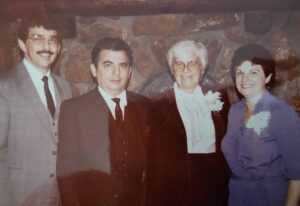
Vincent went on to marry the love of his life, Raphael “Rae” Romano. Their love for one another created a family dynamic of friendship, respect, and a large dose of humor. Besides providing me with all the love and support any child could ask for, he taught me that anything is possible and to never give up.
My dad was diagnosed with metastatic cancer when I was in high school. He wanted me to go to college locally so I could help him and my mom during his illness. Our neighbor was a pharmacist and a good friend of the family, so when I chose pharmacy school he gave me a job in his pharmacy during my first year.
Education to the highest level possible was not a dream but a requirement in my family. There were no other acceptable options. I understood that my commitment to start pharmacy school was in fact a commitment to finish pharmacy school; no other options were on the table.
Chapter 1: John H.
In the late 1990’s, I was working for a large institutional pharmacy provider, Omnicare, where one of my responsibilities was to oversee the company website. The business potential for the internet was in its early stages and there was nothing but opportunity to learn.
During my tenure at Omnicare, I met my first real mentor in IT, a young man named John H. John had Osteogenesis Imperfecta, also known as broken bone disease. He was not more than 4 feet tall, was confined to a wheelchair, and weighed about 40 pounds. Instead of using a desk chair, he would climb out of his wheelchair and crawl onto the desk to use the keyboard.
Despite having OI, John had started a software development company in his hometown of Cincinnati on his own. His work was functional as well as attractive; John believed in the simplicity of design and the appropriate use of graphics.
I cannot overstate how much John taught me about the internet and software development, nor can I overstate the lessons I learned on determination, overcoming obstacles, and fulfilling your mission in life. My experiences with John were both humbling and inspiring. I think of him often.
Chapter 2: Pharmacy Fred
By 2001, I found that I had been an executive for more than 15 years and had not worked as a practicing pharmacist in all that time. I decided to move back to Pennsylvania and return to the practice of pharmacy. Following up on an ad in the local paper, I was hired as a pharmacy supervisor at the Reading Hospital and Medical Center.
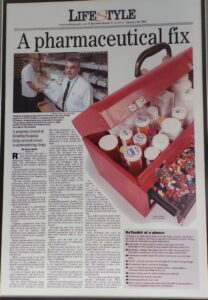
To say my pharmacy skills were rusty is an understatement. (I had a colleague who called me “clinically dead” – humorously…I think.) Not only had I been out of practice for 15+ years, but the practice had moved on in a major way. Many new drugs had been released, and the concept of clinical pharmacy was introduced to hospital pharmacy practice. Pharmacists were far more involved in clinical decisions and not just in the dispensing of drugs.
We had about 50 pharmacists and 50 pharmacy technicians. Among my observations was the struggle that everyone, including me, had with keeping current with the ever-changing world of clinical pharmacy practice. Pharmacists had become more active members of the clinical team; they were no longer in the pharmacy department but out on the floors interacting with patients and other clinicians.
There was one pharmacist who seemed to be the primary resource for many in the department. His name was Fred, but we called him Pharmacy Fred. While most of the other staff had their lab coats stuffed with index cards and notepads, and they all carried some sort of binder with their own library of resource information, no one could compare to the organization of Pharmacy Fred’s binder.
After my 15 year hiatus from practicing pharmacy, I personally needed help. I was looking for tools to help me navigate these new challenges, so I asked to borrow the binder from Pharmacy Fred. I began to gather copies of all the clinical staff’s notes, cards, and binders, until I had these resources in an all-inclusive, expanded binder.
I presented it to the entire staff as the “Pharmacy Fred +” binder. Everyone wanted one, and I was now tasked with photocopying 50+ versions of everything this binder contained. I had zero interest in that task, so I had to come up with another plan.
Chapter 3: John Neville
Faced with over 50 binders that needed filling, I remembered that I had a cousin, John Neville, in Boston who was in software development. I called him and, lucky for both of us, he was between jobs. I explained the task at hand and asked if there was something that we could do.
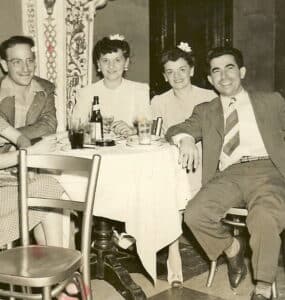
John gave me a proposal and I presented it to Reading Hospital’s pharmacy management. We offered a place to organize content by nursing department (NICU, PEDS, Critical Care, etc.), and then by drug. A drug like dopamine would have content for its use in the NICU and another content piece for its use in Adult Critical Care. It was just going to be content, an electronic binder. John and I would build a website to catalog and curate this information (hospital procedures, guidelines, protocols, etc.) and the hospital would pay to use it.
In the past, I had begun to research domain names and decided on one in particular: RxToolKit.com. I don’t really know what it was about “RxToolKit”. At the time, I didn’t purchase the domain with any purpose in mind. In fact, I purchased the domain a couple of years before RxToolKit was even thought of.
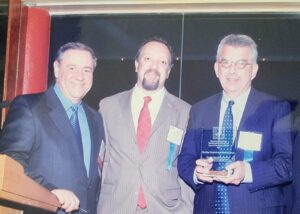
The hospital administration accepted the proposal and RxToolKit launched in June 2004. The hospital thought so much of it that they submitted it to the Institute for Safe Medication Practices (ISMP) for their annual “Cheers Award” and we won. The award (which I have at home) says, “Recognizing actions that have set a standard of excellence in the prevention of medication errors.”
Working with John has been one of the major joys in my life. He’s not just smart, but intuitive. We seem to be able to communicate with the fewest words possible. Without John, there would be no RxToolKit.
Chapter 4: The Reading Hospital Staff
The Reading Hospital staff were very supportive of RxToolKit, but I want to take a moment to mention a few who were devoted advocates: John M., a pharmacy director; Annie, an assistant director; Joe, a previous director; Joan, a clinical manager; Karen, a clinical specialist for the NICU/PEDS; and Gina, a clinical specialist for the Emergency Department.
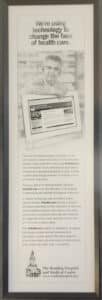
After its launch, RxToolKit became the primary source of clinical information for the pharmacy department. We were adding more and more content, drug monographs, and a more intuitive search feature. We then began to provide the nursing department with access to RxToolKit. We introduced our Infusion Drip List and our IV Push Drip List, which are the parents of RxWorkFlow.
In 2005, the Joint Commission for Hospital Accreditation published their list of Practice Standards for Hospitals, and one of the standards was to require Standardized Infusion Concentrations for Pediatrics and Neonatal Intensive Care. This was a new challenge for Reading Hospital, as our pediatric and neonatologists used the Rule of 6’s.
The Rule of 6’s required that the pharmacy prepare a different concentration of infusion drugs each day based on patient weight. This is exactly what the Joint Commission was trying to avoid: pharmacy mistakes in preparation. The hospital approached John and I, and (after a brief conversation between us) RxCalc was born.
With RxCalc, we launched dosing, preparation, and administration calculators designed to minimize error and to improve communication between the pharmacists who prepared the drug and the nurses who administered the drug.
Following the Joint Commission guidelines, RxToolKit then published the standardized infusion concentrations, and those concentrations became the drop-down choice in RxCalc. We passed the Joint Commission inspection that year.
Over the next 12 years, more than 20 separate applications were added to the RxToolKit application library, many of them still in use today.
Chapter 5: Eric Cropp and Chris Jerry
In 2006, a two-year-old girl named Emily Jerry was administered a fatal infusion due to a medication error. The error was committed by a pharmacy technician and was not successfully caught by the pharmacist, Eric Cropp.
Emily lost her life, and her father, Chris, was so impacted by what he learned in investigating the error that he devoted his life and career to promoting the awareness of medication errors and their prevention. In 2009, Chris Jerry founded The Emily Jerry Foundation to increase awareness about preventable medication errors. The foundation also works to implement legislation across the United States promoting education and best practices for clinicians.

Eric was the second victim of this tragedy. Not only did he lose his license to practice pharmacy, but he went to jail and suffered the emotional toll of the loss of Emily’s life. You can read more about this tragic medication error in Eric’s blog post, In My Own Words: A Fatal Medication Error.
I’ve not only gotten to know both Eric and Chris, but I continue to serve on the Board of The Emily Jerry Foundation. By getting to know Chris and Eric, I’ve seen firsthand the pain endured in the loss of the victim, Emily, and of the emotional scarring for the second victim, Eric.
This experience has deepened my conviction to do all in my power to prevent any harm done in the preparation and administration of medications meant to heal and alleviate suffering.
Chapter 6: Katie Nesbitt, Joanne Adam, and Chuck Feeney
During my time, I worked with three people who impressed me not only for their skill and commitment to excellence, but their unwillingness to accept anything but perfection: Chuck Feeney, Joanne Adam, and Katie Nesbitt.
Chuck and I were both vice presidents of Geriatric Pharmacy Services, and Joanne was a certified pharmacy technician at Reading Hospital. Katie was a pharmacy resident who worked with me on an application for blood clotting factors for the pharmacy.
The three of them are the kind of people who feel strong enough in their convictions to challenge you, to make you think, and to provide you with confidence. Katie, Joanne, and Chuck F. are now part of the RxToolKit and WeInfuse family, and their support is a gift I will always value.
Chapter 7: Reece, Bryan, and My New Family
In 2017, I received a phone call from Bryan Johnson. Bryan had uncovered some of RxToolKit’s labeling solutions and wanted to know more about what we did and how we did it. That phone call began the most significant change in the life of RxToolKit. Through Bryan, I met his business partner, Reece Norris, and subsequently got to know many outstanding individuals at their company, WeInfuse.
We spoke periodically, and they would refer customers to us who expressed a need for clinical content. We began to explore adding RxToolKit content to the WeInfuse application, a software solution for the complicated infusion and pharmacy workflows.
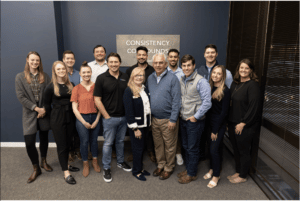
That relationship culminated in the acquisition of RxToolKit by WeInfuse in February 2022. This has been a game changer for RxToolKit and our team. We have been offered the opportunity to join with some of the smartest, most caring, and dedicated individuals one could wish for.
As of November 2022, RxToolKit is now fully integrated with WeInfuse. This integration allows users of both companies to access any RxWorkFlow drug monograph while in the WeInfuse application.
In just these few short months, I’ve seen our product become more mature, more efficient, and more well-known. I’ve been more energized in these last eight months than at any time since 2004. I am so excited for the future and so happy to continue the journey with a team that I respect and admire.
Conclusion: Deb DiTrapano
Launching RxToolKit was not the only life-changing thing that happened to me at Reading Hospital. One of my jobs was to make daily rounds to a variety of clinical settings within the hospital. On my rounds, I observed this smart, determined, and beautiful nurse named Deb. For 10 years I saw her on an almost daily basis until I worked up the courage to try to take the relationship to a new level.
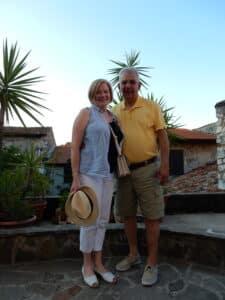
Today, that nurse is my wife, partner in life, and the rock upon which I lean. There have been times when I lost track of that 18-year-old boy in the middle of the Atlantic and was ready to take the easy way out and quit RxToolKit.
She has reminded me of the importance of this work, the people that depend on resources to help them, and of the commitment I have to all the people on this journey with me. This is a journey of many, not just one. I’m sure that over time, more people will create new chapters for our story and I can’t wait to read them.


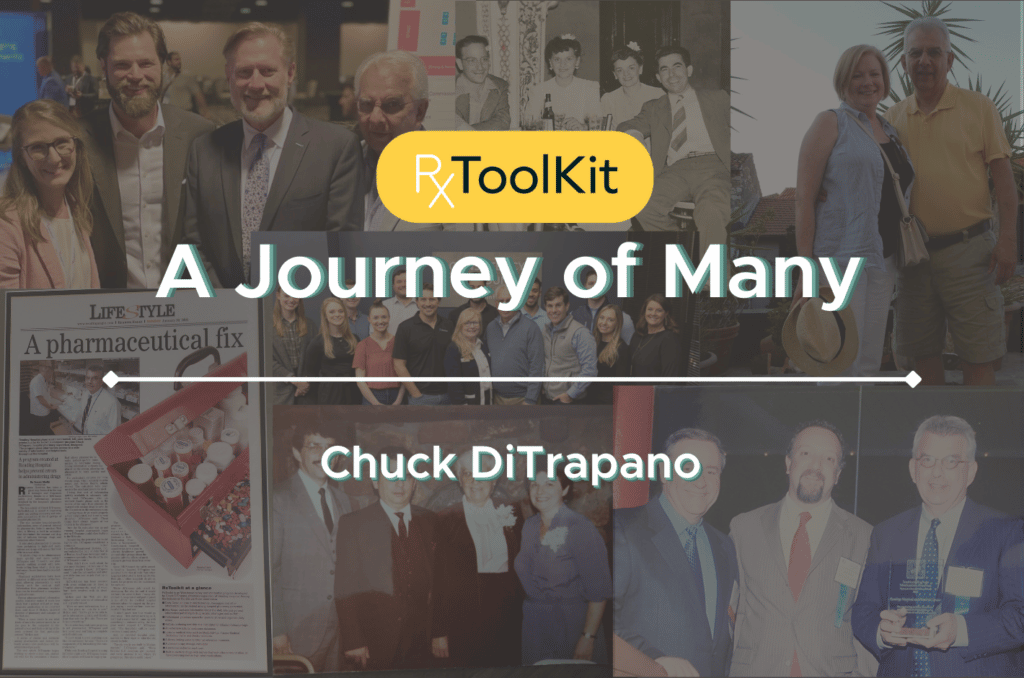
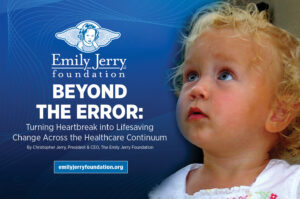
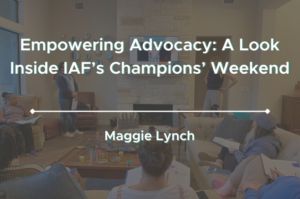

One Response
Wow, you had me in tears reading this story. Thank you for all you have done to help me, the other pharmacists and most importantly, the patients over all of these years. Both you and John have always been there at a moments notice, literally, whenever I needed help.
The old crew at Reading are all proud of what you have accomplished and are glad we were a part of your journey.